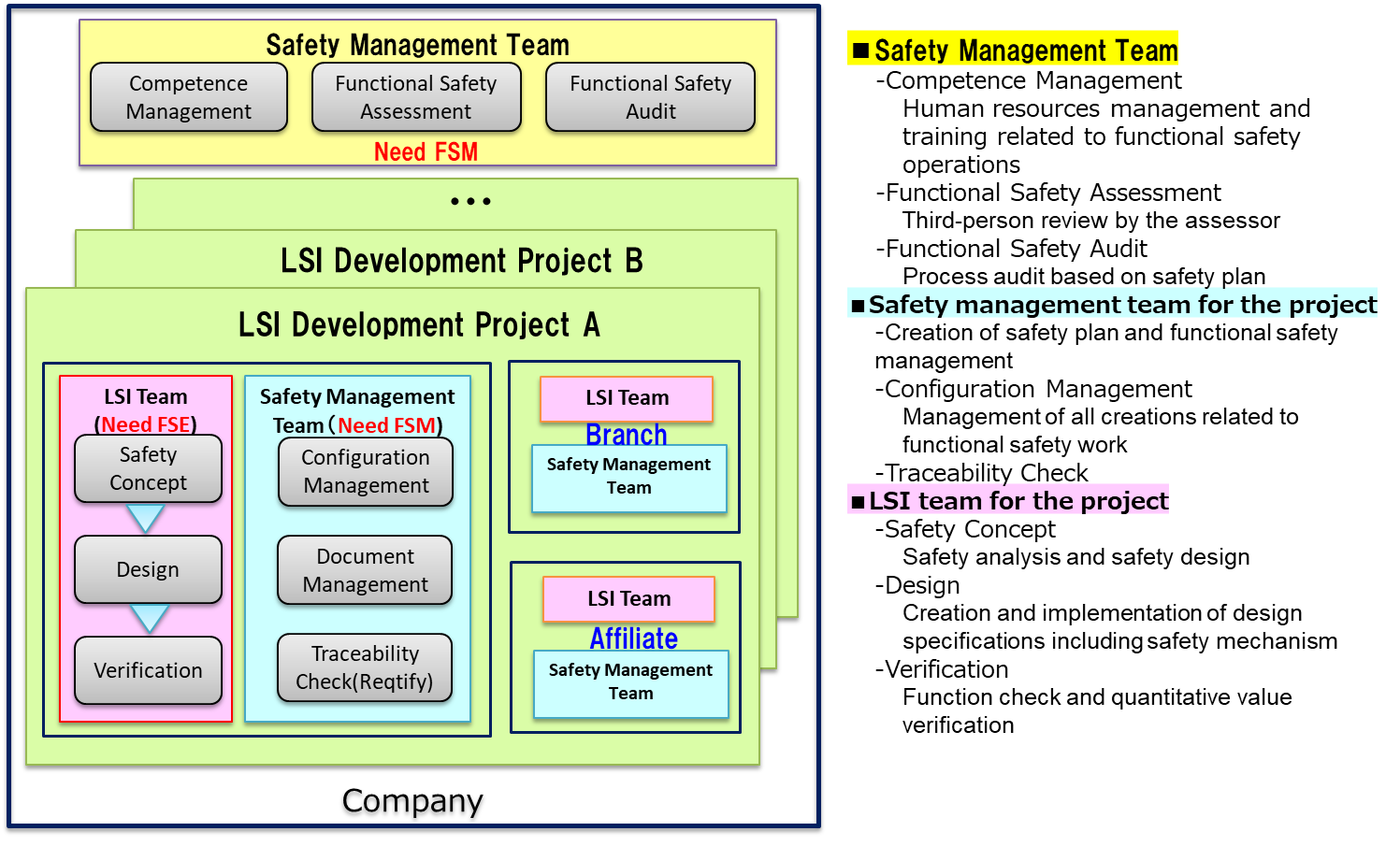You may encounter various obstacles when you try to develop LSI development compliance with functional safety standards. This blog will describe 3 typical customer pain points and the tips to address them.
1. Unexpected time and cost increase
Time and cost for developing LSI compliant with functional safety standards may unexpectedly exceed the original plan. In particular, if it’s the initial introduction, you may end up sending the double even your plan was pessimistic. Why does it happen? This is often due to a new phase called “The Safety Concept”, which is unique to functional safety. The Safety Concept determines the requirement specifications of architecture-level safety design and safety mechanisms. Since the functional safety standard itself is a standard for systems, board circuits, and software, abundant experience in LSI developments compliant with functional safety standards is required to create the development plan and manage the works in the Safety Concept. This also applies to the design and verification phases. (The problems will be described in the next blog.) Especially in the Safety Concept, the following factors also contribute the unpredicted increase of time and cost:
- The safety requirement specifications based on the LSI development specifications might not be sufficiently prepared for the safety requirements from the user’s system perspective.
- The requirement specifications of safety functions might not be appropriately prepared for the “abstract” safety mechanism requirements described in the standards.
- Traceability might be inconsistent between safety requirements, safety mechanism requirement specifications, and LSI development specifications that support functional safety, which causes iterations.
Based on a rich track record of functional safety specialized in LSI development, Vtech offers a short-term introduction of the Safety Concept and the requirement specification creation for safety mechanisms considering the circuit scale.
2. Difficulty in developing an automotive Application Specific Standard Product (ASSP) without safety requirements from end customers.
The safety requirement specifications of an automotive ASSP to be independently planned and developed should be created in-house, based on use cases of the ASSP. Safety Element Out of Context (SEooC), which is described in Part 10 of the ISO26262-2018, is used to infer the top-level safety requirements. Fig. 1 shows the assumptions for SEooC development.

Fig. 1
In some cases, the end customer owns a database of use cases. However, it may be not usable as is, and the use cases may be reconsidered from the viewpoint of functional safety. In addition, based on the ISO26262 standard, the malfunction factors should be derived from the use cases.
Both application-level know-how and ISO26262 knowledge are required to create safety requirements for LSI development. Since its founding, Vtech has accumulated the expertise through over 1,000 LSI development projects for various types of applications. The Vtech engineers qualified as Functional Safety Engineers with rich LSI development experience will support customers to create the safety requirement specifications, which are consistent with the use cases the system was used.
3. Being unfamiliar with the specific organizational structure, organizational management, and implementation items for development.
In order to develop LSI compliant with ISO26262 standard, it’s necessary to establish the safety management team led by a Functional Safety Manager inside development projects. And the safety management team should be independent from development projects, as required by the ISO26262 standard. The safety management team outside of development projects are generally under the control of a company-wide common department. These teams also create standard functional safety regulations, functional safety audits, functional safety assessments, and human resource management related to functional safety projects. In development projects based on the ISO26262 standard, the functional safety teams inside and outside of the projects should cooperate with each other and clarify the responsibilities.
Vtech supports optimizing organizational structure and operation of our customers by assigning engineers who are qualified as Functional Safety Managers and Engineers with a track record in functional safety operations inside and outside the projects.

Fig. 2 Organizational structure required by ISO26262, and the positioning of safety management teams
Please feel free to contact us for more details.
Next time, we will introduce customer pain points related to ASIL level support, safety mechanism specification and design, verification method, and quantitative report creation.